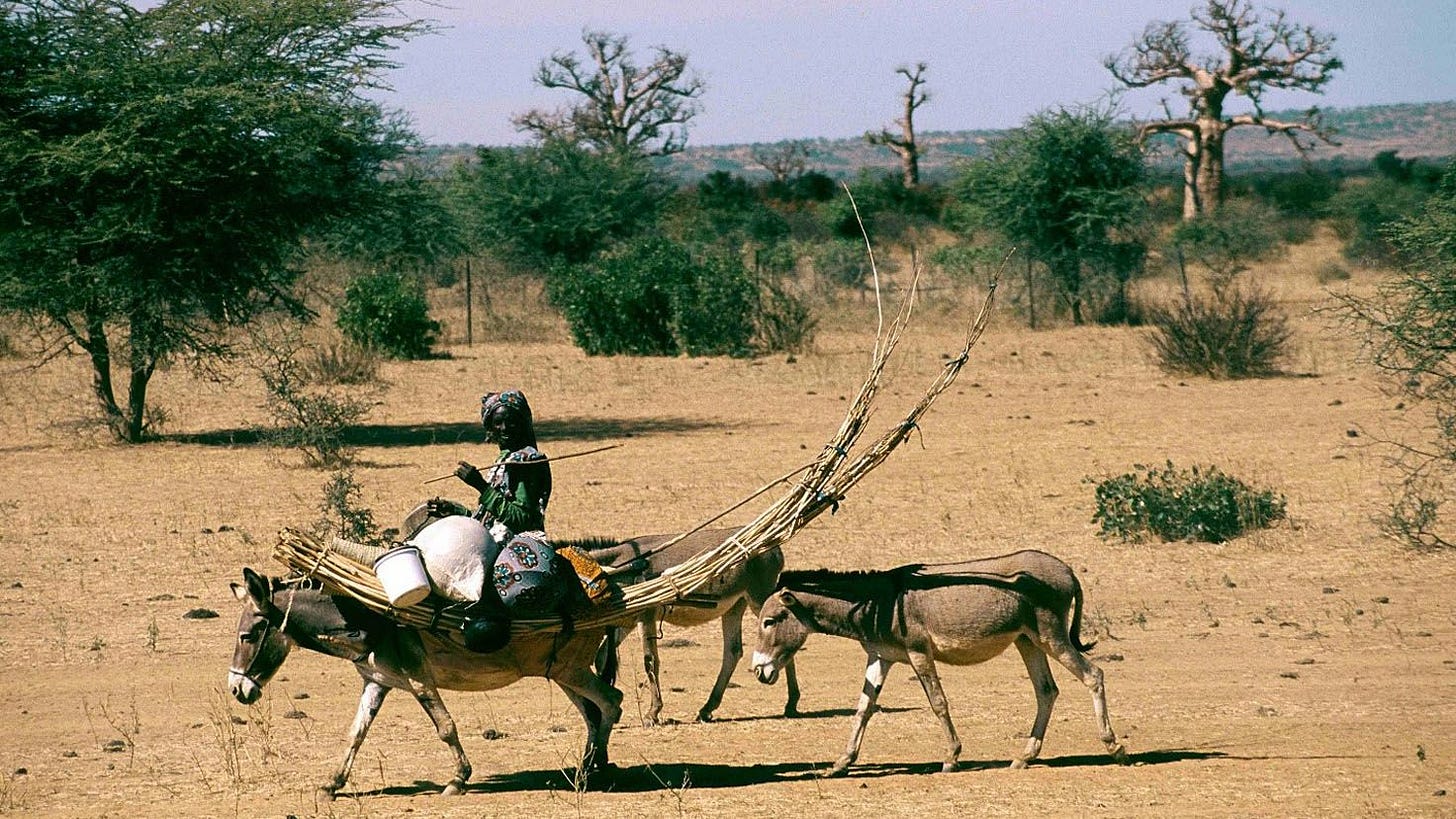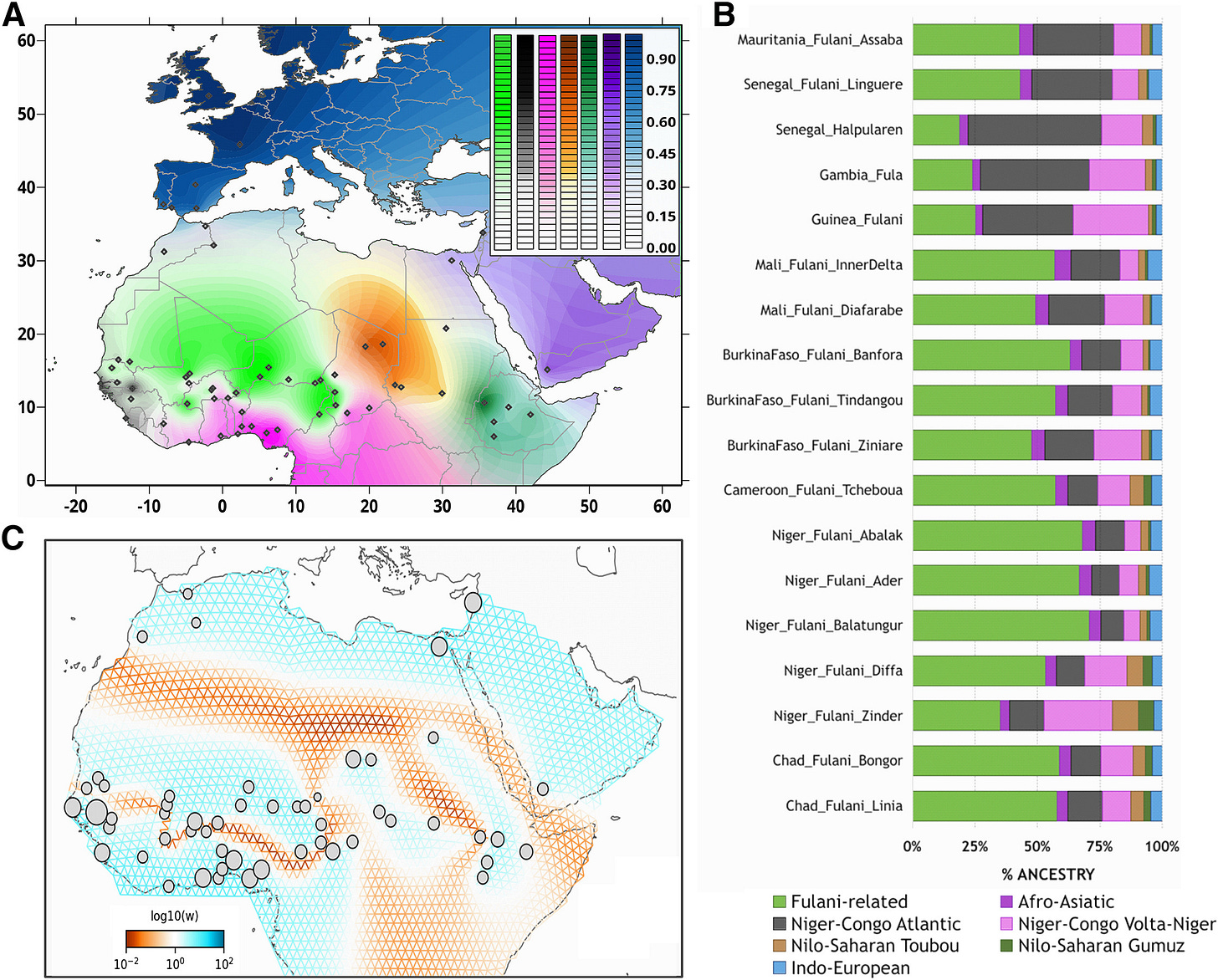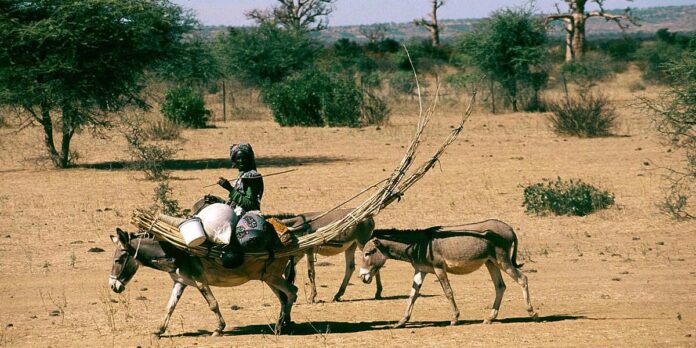For centuries, the Fulani people—renowned pastoralists whose migrations have shaped West and Central Africa—have intrigued historians, linguists, and anthropologists. Where did they come from? How did their nomadic culture evolve? Now, a groundbreaking genetic study by Fortes-Lima et al., published in The American Journal of Human Genetics, has provided fresh insights into the complex origins of the Fulani, tracing their ancestry back to an ancient, lost world—the Green Sahara.

By analyzing the genomes of 460 individuals across 18 Fulani populations, researchers uncovered a shared ancestral component linking them to early North African and West African groups. The results tell a story of migration, adaptation, and survival in one of the world’s most challenging environments.
“We revealed a genetic component closely associated with all local Fulani populations, suggesting a shared ancestral component possibly linked to the beginning of African pastoralism in the Green Sahara.”
This study not only refines our understanding of Fulani history but also challenges long-standing assumptions about African population genetics. It provides a rare glimpse into the genetic legacies shaped by climate shifts, trade networks, and cultural interactions stretching back thousands of years.
The Sahara wasn’t always a vast, arid desert. Between 12,000 and 5,000 years ago, it was a fertile landscape of lakes, grasslands, and river networks—a region known as the Green Sahara. During this period, early pastoralist societies thrived, herding cattle and moving across an ecosystem that would soon be swallowed by an advancing desert.
The study suggests that the ancestors of today’s Fulani likely emerged from this Green Sahara population. As the climate dried and the Sahara transformed into an inhospitable wasteland, these early herders were forced southward, mingling with local West African populations. Their genetic traces remain in modern Fulani communities today.
“Comparisons between genetic data of Fulani and ancient individuals identified the presence of a genetic component in all Fulani populations associated with ancient groups from North Africa.”
Unlike many other African groups, the Fulani show significant genetic contributions from North African Berber populations, as well as traces of ancient Eurasian ancestry. This unique mixture has fueled centuries of speculation about their origins—some have even suggested they came from the Near East. But as this study shows, the answer lies much closer to home.
Beyond genetics, the Fulani are bound by a distinct cultural identity centered around cattle herding, social stratification, and a strict ethical code known as pulaaku. Their migrations, trade networks, and interactions with other groups have shaped West Africa for centuries, influencing languages, political structures, and economies.

Yet, their genetic makeup is not uniform. The study found a striking west-to-east gradient in Fulani populations, reflecting historical migrations and interactions with different local communities. Western Fulani groups showed stronger genetic ties to West African populations, while eastern Fulani communities bore evidence of interactions with Central African and Nilo-Saharan groups.
“Our analysis revealed genetic differences between local Fulani populations following a west-east cline, highlighting their complex genetic history, which was shaped by interactions with different local groups and various demographic events.”
This genetic variation aligns with linguistic and cultural differences among Fulani groups. Some communities are entirely nomadic, while others have settled into farming villages, adopting new traditions while retaining core elements of their pastoralist identity.
Despite their immense historical significance, the Fulani remain one of the most understudied populations in genetic research. This gap is emblematic of a broader issue—African populations have long been underrepresented in genomics, with most studies focusing overwhelmingly on European ancestry.
This study marks an important step toward correcting that imbalance, but it also raises pressing questions about who benefits from genetic research. Many African populations, including the Fulani, have little access to the scientific narratives being written about them. While the research team engaged local communities and obtained informed consent, broader concerns about data sovereignty and scientific inclusivity persist.
The study’s authors acknowledge this, calling for greater collaboration with African researchers and institutions. Future studies will need to ensure that genetic discoveries translate into tangible benefits for local communities, whether in the form of improved healthcare, historical knowledge, or cultural preservation.
“Even though the Fulani are a huge population group of more than 40 million people, they are still largely underrepresented in genomics research.”
The Fulani have long been at the crossroads of Africa’s great migrations and cultural shifts. Their genes carry the echoes of vanished Saharan civilizations, of ancient cattle herders who once roamed a greener world, and of the merchants and nomads who navigated the trans-Saharan trade routes for millennia.
This study provides compelling evidence that their history is even deeper and more complex than previously imagined. It challenges simplistic narratives about “pure” African populations, revealing the intricate tapestry of migration and adaptation that has shaped human history across the continent.
As more ancient DNA studies emerge, the story of the Fulani—and of Africa’s deep genetic history—will only become richer. But one thing is certain: the Fulani are not an isolated anomaly. They are a living testament to the vast, interconnected human journey that has played out on African soil for tens of thousands of years.
-
Fortes-Lima et al. (2025) conducted an extensive population study of the Fulani, uncovering genetic differentiation along a west-east cline across the Sahel. Their findings highlight admixture events with other African populations and a deep genetic link to ancient North African groups.
📄 Citation: Fortes-Lima, C. A., Diallo, M. Y., Janoušek, V., Černý, V., & Schlebusch, C. (2025). Population history and admixture of the Fulani people from the Sahel. American Journal of Human Genetics.
🔗 DOI: 10.1016/j.ajhg.2025.04.012 -
Vicente et al. (2019) explored genome-wide adaptations in Fulani nomads, focusing on the lactase persistence trait. Their research suggests that historical selection pressures related to pastoralism played a significant role in shaping their genetic makeup.
📄 Citation: Vicente, M., Priehodová, E., Diallo, I., & Podgorná, E. (2019). Population history and genetic adaptation of the Fulani nomads: Inferences from genome-wide data and the lactase persistence trait. BMC Genomics, 20(1), 1-12.
🔗 DOI: 10.1186/s12864-019-6296-7 -
D’Atanasio et al. (2023) examined whole-genome data to trace the genetic echoes of the last Green Sahara period on Fulani and Sahelian populations. Their findings suggest that Fulani ancestors may have been Saharan cattle herders.
📄 Citation: D’Atanasio, E., Risi, F., Ravasini, F., & Montinaro, F. (2023). The genomic echoes of the last Green Sahara on the Fulani and Sahelian people. Current Biology.
🔗 DOI: 10.1016/j.cub.2023.09.012 -
Hassan & Underhill (2008) analyzed Y-chromosome variation among Sudanese groups, showing that Fulani possess a distinct genetic structure influenced by language, geography, and historical migrations.
📄 Citation: Hassan, H. Y., & Underhill, P. A. (2008). Y-chromosome variation among Sudanese: restricted gene flow, concordance with language, geography, and history. American Journal of Physical Anthropology, 137(2), 168-174.
🔗 DOI: 10.1002/ajpa.20876 -
Černý et al. (2006) investigated mitochondrial DNA (mtDNA) among Fulani nomads, revealing significant differences compared to sedentary populations in West Africa, which challenges previous assumptions about their genetic relationships.
📄 Citation: Černý, V., Hajek, M., Bromova, M., Čmejla, R., & Diallo, I. (2006). MtDNA of Fulani nomads and their genetic relationships to neighboring sedentary populations. Human Biology, 78(1), 9-22.
🔗 DOI: 10.1353/hub.2006.0024
These studies help contextualize the current research by highlighting the complex migratory patterns, genetic adaptations, and historical interactions that have shaped the Fulani people.

